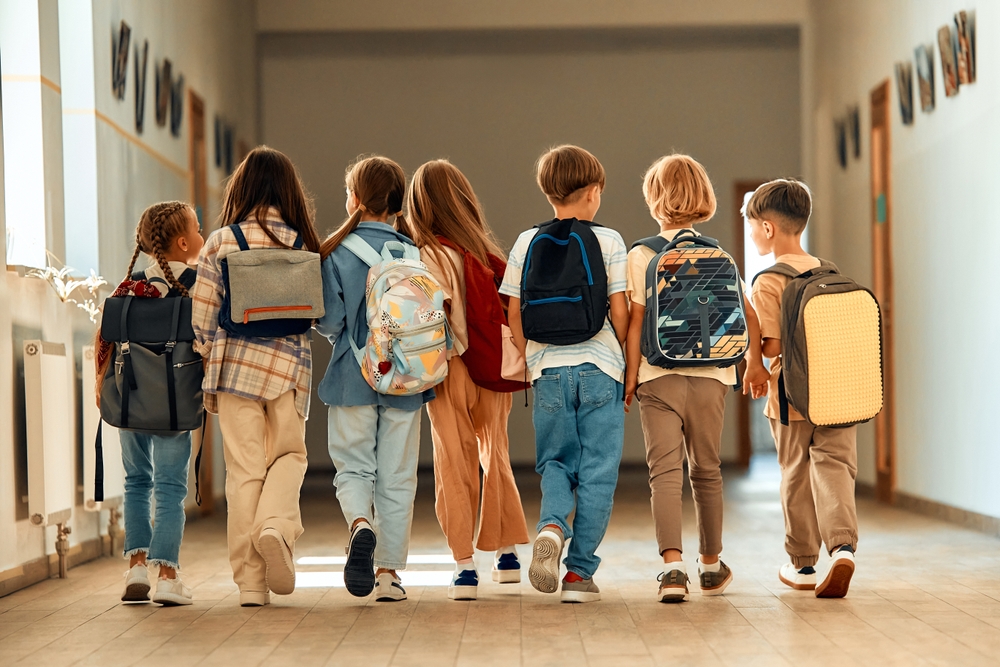Introduction
The Directorate of Education, Delhi holds an essential place in the landscape of school education in the capital of India. It administers secondary and senior secondary education in Delhi. It also supports reforms, ensures quality, and serves students, teachers, and schools. This blog will walk you through its history, structure, roles, schemes, challenges, and future directions. I will use simple words and clear lines. You will find it easy to follow.

1. Background & History of Education in Delhi
Early days: Pre-1973
Before 1973, education in Delhi was split across many bodies. Local municipal bodies handled primary schooling. The higher levels lacked unified control.
The Delhi School Education Act, 1973
In 1973, the Delhi School Education Act became law. Under this Act, primary and pre-primary education came under local bodies (MCD, NDMC, Cantonment Board). The Act made the Directorate of Education responsible for secondary and senior secondary education.
Expansion and changes
By 1980–81, Delhi had about 704 secondary/senior secondary schools. In 2007–08, that number rose to 1,759. Enrollment also rose sharply (254,000 → 793,000).
To reduce logistic strain, many “Sarvodaya Vidyalayas” were run in two shifts (morning for girls, evening for boys). Over time, the government converted many schools into composite schools (classes I–XII) to provide continuity.
Delhi also established SCERT (State Council of Educational Research & Training) in 1988. SCERT supports curriculum design, teacher training, and school research.
2. Mandate, Mission & Vision
Mandate & main goals
The Directorate of Education (DoE) oversees the middle through upper secondary education levels in Delhi.
Its key duties include:
- Designing curriculum and academic support (through SCERT)
- Running government schools and managing the staff
- Quality assurance of the teaching and learning activities
- Planning and implementation of schemes for equity (for poor, girls, and weaker sections)
- Managing infrastructure, school buildings, facilities
- Monitoring, evaluation, inspection
- Providing textbooks, uniforms, subsidies, and support programs
Vision & mission
According to its official documents:
- It aims to make Delhi fully literate.
- It wants to promote all-round personality development of each child
- This-first approach lays the foundation for distinguishing the fundamental curriculum from the three other curricula.
- The Right to Education mandates free elementary schooling for children until the age of 14.
3. Organizational Structure & Governance
Top leadership
At the top, the DoE is headed by a Director (Education). As of current records, Ms. Veditha Reddy holds that post.
It also has Joint Directors, Additional Directors, etc.
Districts and Zones
Delhi is divided into 12 districts. Each district contains several zones.
At the district level, a District Education Officer (DEO) supervises functions. At the zone level, a Zonal Education Officer (ZEO) oversees schools and local tasks.
Headquarters & support units
The DoE headquarters handles major administrative tasks: policy, staff management, budget, and coordination.
SCERT works as an academic support body under the DoE to help with curriculum, teacher training, and research.
Other units at HQ include inspection, infrastructure, planning, finance, and more.
Link with local bodies
Primary education and pre-primary schooling in Delhi largely fall under municipal local bodies (MCD, NDMC, Cantonment).
But DoE runs many composite (I–XII) schools, called Sarvodaya schools, which carry both primary and higher levels under one roof.
The DOE also supervises and supports voucher schools in consultative, recognition, and participatory spheres.
4. Key Functions & Responsibilities
Here are the core functions DoE performs in Delhi:
4.1 Curriculum, textbooks & academic guidance
DoE, through SCERT, drafts curriculum frameworks. It publishes textbooks and guides.
Regard for teacher training, whether on the job or ahead of time (in-service or preservice), is confirmed in the literature.
It motivates experimentation and educational research.
4.2 School operations & administration
DoE runs many government schools across Delhi. Appointment of teachers, staff, and handling of transfers.
Maintenance of school infrastructure, buildings, labs, libraries, toilets, etc. Monitoring school performance, holding inspections, visits, auditing.
It ensures implementation of rules and acts (like RTE).
4.3 Welfare and support schemes
DoE offers free textbooks to students.
It gives subsidies for uniforms to needy students.
It runs Book Bank schemes.
Also provides financial assistance (scholarships, transport for remote children) in some cases.
It supports library improvements.
4.4 Policy implementation & compliance
DoE ensures all schools follow the Right to Education Act (RTE).
It issues guidelines and circulars to schools.
It enforces norms for student-teacher ratio, infrastructure norms, safety norms.
Its audits and reviews school compliance.
4.5 Innovation & quality improvement
DoE encourages experiments in teaching methods.
It supports the use of technology in classrooms (ICT, computer labs).
It introduces new streams in senior secondary (science, commerce, humanities, vocational).
Or supports extracurricular and cultural schemes.
4.6 Data, monitoring & evaluation
DoE collects data from all schools (enrollment, exam results, infrastructure).
It uses data to plan resource allocation and reforms.
It conducts inspections, reviews, and feedback loops.
5. Major Initiatives, Schemes & Schools
Here are some important initiatives and types of schools under the DoE:
5.1 Sarvodaya Vidyalayas / Composite schools
Originally many schools were secondary only. DoE later incorporated primary classes in many of them to make them composite schools (classes I–XII).
This allows students to stay in one school without shifting.
5.2 Rajkiya Pratibha Vikas Vidyalayas (RPVV) / DBRA-SOSE
RPVV schools began in 1997 under DoE to offer high-quality education in government schools.
These later evolved into DBRA-SOSE (Dr. B.R. Ambedkar Schools of Specialized Excellence).
These schools aim to bring excellence in science, arts, etc., in public schooling.
5.3 Delhi Board of School Education (DBSE)
In 2021, DoE set up a state board—Delhi Board of School Education (DBSE).
Some top schools (DBRA-SOSE etc.) affiliate with DBSE instead of CBSE.
5.4 Safety & security initiatives
In 2025, DoE drafted an SOP (Standard Operating Procedure) for handling bomb threats in schools.
This plan has prevention, preparedness, response, and recovery steps.
DoE requires monthly safety checklists and assigns roles to Delhi Police, Fire services.
5.5 Special schemes, student welfare
DoE runs moral & human values programs. For example, “Humanity Olympiad” was held in government schools.
It plans co-curricular and patriotic activities, like letter writing drives on Independence Day.
For teachers, DoE issues award guidelines. In 2025, it made vigilance clearance mandatory and a 60% benchmark for awards.
5.6 Digital & app initiatives
DoE has a mobile app for students, teachers, and parents for information and services.
It also maintains online feedback modules and portals to handle circulars, school data, orders.
6. Strengths, Achievements & Positive Impact
Wide reach
DoE covers thousands of government schools across Delhi. It manages large numbers of students.
Innovations in school forms
By converting many schools into composite schools, DoE addressed fragmentation. Students need not change schools mid-way.
Focus on excellence in public schools
With RPVV / DBRA-SOSE, DoE created centers of excellence within public schooling.
Policy & academic support via SCERT
SCERT helps improve curriculum, teacher capacity, research, and innovation.
Welfare support
Free textbooks, uniform subsidies, book banks, and assistance help weaker students.
Safety and modern governance
The recent move (SOP for bomb threats) shows DoE takes safety seriously.
Digitalization of services and feedback systems improve transparency.
Recognition & awards
By giving awards to outstanding teachers/principals, DoE motivates quality work.
7. Challenges & Issues
No system is perfect. DoE faces several hurdles:
Infrastructure & capacity constraints
Many schools function in double shifts or shared buildings due to space shortage.
Some schools rely on semi-pucca structures or portable cabins.
Teacher shortage & uneven quality
Some zones/districts struggle to fill teacher posts. Some teachers require better training or support.
Dropout and student retention
In some areas, dropout rates remain high between classes.
Equity & resource gap
Some students lack access to digital tools, extra coaching, and safe transport.
Managing coordination
Since primary education rests with municipal bodies and DoE handles higher levels, coordination gaps may arise.
Monitoring and accountability
Ensuring every school follows norms needs strong inspection and follow-up.
Policy shifts & continuity
Frequent changes in policy or leadership can disrupt long-term plans.
8. How DoE Responds & Plans Ahead
Infrastructure scaling
DoE continues to build new school buildings, upgrade facilities, and reduce shift schools.
It replaces tin sheds and old structures with permanent ones.
Teacher development
DoE invests in training, mentoring, workshops, and peer learning.
It emphasizes modern teaching methods, digital tools, and active learning.
Strengthening safety
It enforces safety protocols, audits, drills, and infrastructure (CCTV, alarms, etc.).
The bomb threat SOP is one such step.
Focus on equity & inclusion
DoE expands schemes for weaker students, girl students, and marginalized communities.
It enhances transport support, financial aid, and special help.
Technology adoption
It introduces smart classrooms, digital learning platforms, and online monitoring.
One category is composed of applications, and the other category is comprised of portals. The aim of these applications is to help these three segments (students, teachers, and parents) in obtaining and accessing some information.
Data-driven decision making
Department of Energy establishes agenda for data collection, data analysis, identification of gaps, resource allocation and monitoring of outcomes.
Stakeholder engagement
It involves teachers, parents, communities in school decisions.
It seeks feedback and acts on complaints.
Continuous reforms
DoE pilots new ideas, assesses them, scales the successful ones.
It keeps updating policies, aligning with national education reforms like NEP 2020.
9. Case Examples & Stories
Example: RPVV / DBRA-SOSE success
RPVV (now DBRA-SOSE) schools are often cited as benchmark government schools with good results, high enrollment, and strong faculty.
They attract strong students, maintain good facilities, and experiment with curriculum.
Example: Safety SOP implementation
After rising threats in schools, DoE drafted a SOP covering prevention, response, recovery.
Schools now submit monthly safety checklists to district offices.
This ensures accountability and quick action.
Example: Moral education & values
The “Humanity Olympiad” in 2025 reached many students in Delhi government schools.
It highlights DoE’s effort to go beyond academics and nurture character.
Example: Awards for teachers
The 2025 guideline requiring vigilance clearance and a minimum score for awards shows DoE’s effort to ensure fairness.
10. What Students, Teachers & Parents Should Know
- Students can access textbooks, library books, uniforms, and welfare support via DoE schemes.
- Teachers should know about training, transfers, appraisal, rewards.
- Parents can use feedback modules, contact DoE centers, monitor school compliance.
- Parents, teachers, and students should be aware of safety norms in school.
- They should engage in school committees, local meetings, and school development.
11. Future Directions & Recommendations
Here are some suggestions DoE may consider or strengthen:
- Expand infrastructure faster
Build more classrooms, labs, libraries to reduce shifts and crowding. - Strengthen teacher support
Provide continuous mentoring, peer groups, refresher courses, and career paths. - Enhance technology access
Ensure every student has devices or digital access; invest in e-learning. - Focus on early intervention
Track students early to prevent dropouts and remedial help. - Engage communities
Involve local communities, parents, NGOs in school improvement. - Transparent evaluation
Use robust data systems and open reporting for school performance. - Scale successful pilots
Test small innovations and expand what works. - Safety as priority
Keep updating SOPs, train staff regularly, and audit school safety. - Mental health supports
Introduce counseling, life skills, peer support in schools. - Bridge gaps across zones
Pay special attention to underserved zones, low-resource schools.
Conclusion
The Directorate of Education Delhi helps in the schooling system in India’s capital. It straddles administration, academic support, welfare schemes, infrastructure, monitoring, and innovation. It faces big challenges in resources, equity, and capacity. Yet it continues to push reforms, safety, and better education for all.
By improving infrastructure, supporting teachers, using data, and involving communities, DoE can push Delhi’s public schooling to higher standards. The success of its flagship schools, safety initiatives, and digital steps reflect its potential. But sustained efforts, monitoring, and inclusive approaches remain key.




